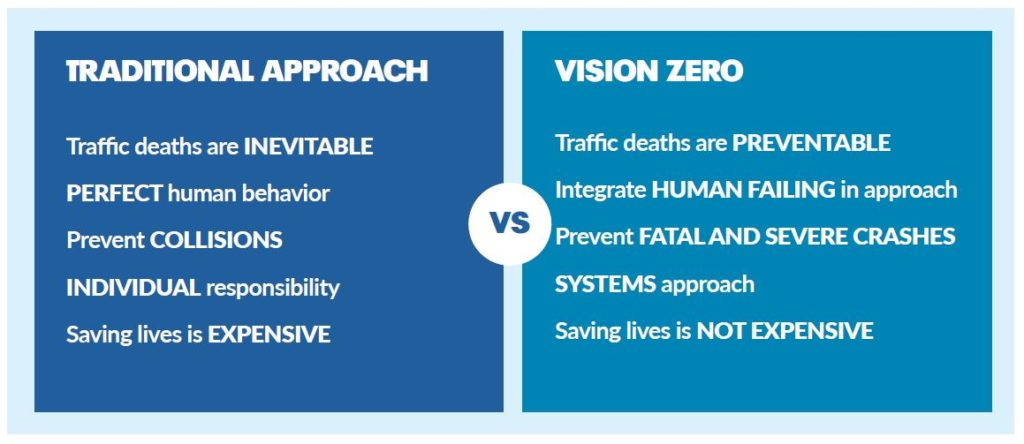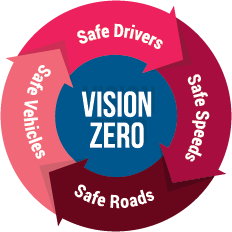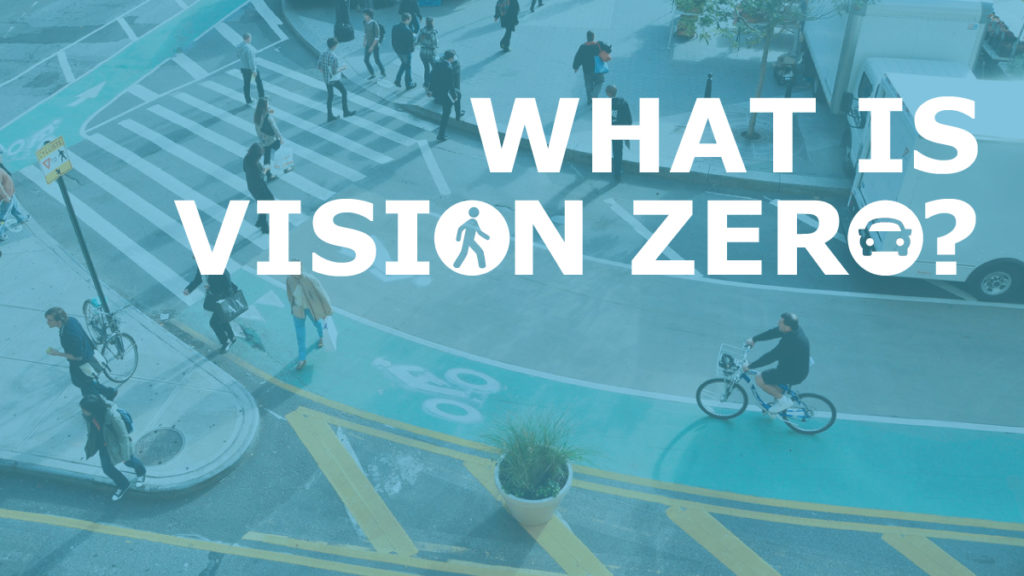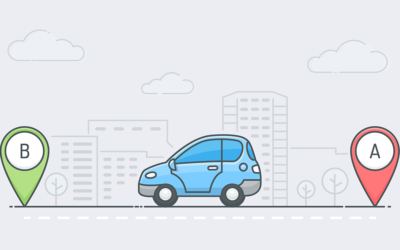What Is Vision Zero?
What is Vision Zero?
Vision Zero is a global initiative with one clear and simple goal: ZERO fatalities or serious injuries on our roadways. First implemented in Sweden in the 1990s, Vision Zero has helped reduce serious injuries and deaths in Sweden by half over the last 20 years. Since then, Vision Zero has gained global momentum as agencies across the world work to ensure safe, healthy, and equitable mobility for all.
Vision Zero is not a slogan, not a tagline, not even just a program. It is a fundamentally different way to approach traffic safety.
A New Way of Thinking
To successfully eliminate fatalities and serious injuries requires a new way of thinking from the traditional approach.

Traditional Approach
The traditional approach to road safety accepts traffic deaths as inevitable and points to human behavior as the leading cause of collisions. Under this approach, ultimately individual road users are responsible. The cost to perfect human behavior on an imperfect road system is too costly and there is an acceptable level of fatalities and serious injuries.
Vision Zero Approach
The Vision Zero approach believes traffic collisions are not “accidents”, but rather are predictable and preventable. Road users inevitably make mistakes, but these mistakes should not result in fatal or serious injuries. Vision Zero is a multidisciplinary approach bringing and all aspects of the transportation system play a role in saving lives. System designers, policy makers, and road users share a responsibility to improve the safety on our roadways. Saving lives is not expensive and there isn’t an “acceptable” number of fatalities.
Vision Zero – Key Themes
 Vision Zero focuses on four key themes:
Vision Zero focuses on four key themes:
- Safe Speeds
- Safe Roads
- Safe Vehicles
- Safe Drivers
Safe Speeds
Driving at the posted speed limit reduces the likelihood of a crash, severity of injuries, and allows motorists enough time to stop in the event of a potential emergency.
Safe Roads
The efforts of System designers and policy-makers are critical to achieve Vision Zero. The design of the road and posted speed limits can help manage a driver’s speed and guide them to do the right thing. When taking into consideration human error, system designers can help reduce collisions and other incidents on our roadways.
Safe Vehicles
Vehicles are increasingly becoming safer by design, playing a key role in reducing collisions. Auto manufactures have rapidly introduced new safety features such as: crash avoidance systems, lane-departure systems, forward-collision warning systems, fatigue-monitoring, and back-up sensors to help increase safety of their vehicles.
Safe Drivers
Driver error plays an important factor in collisions. Educating drivers and enforcing the rules of the road is crucial to reducing collisions that result in injuries or fatalities.
UrbanLogiq and Vision Zero
UrbanLogiq helps agencies better understand the contributing factors that lead to fatalities and serious injuries in their communities by working with existing City data. UrbanLogiq’s platform aggregates siloed traffic and collision data (over space and time) to serve s as a common operating picture, cross-departmentally beneficial for those in operations, planning or safety. The incident dashboard, or, “Crashboard” allows users to filter and analyze incident data, which, when layered with traffic data, provides insights to help inform process, policy, and planning decisions to achieve Vision Zero.



